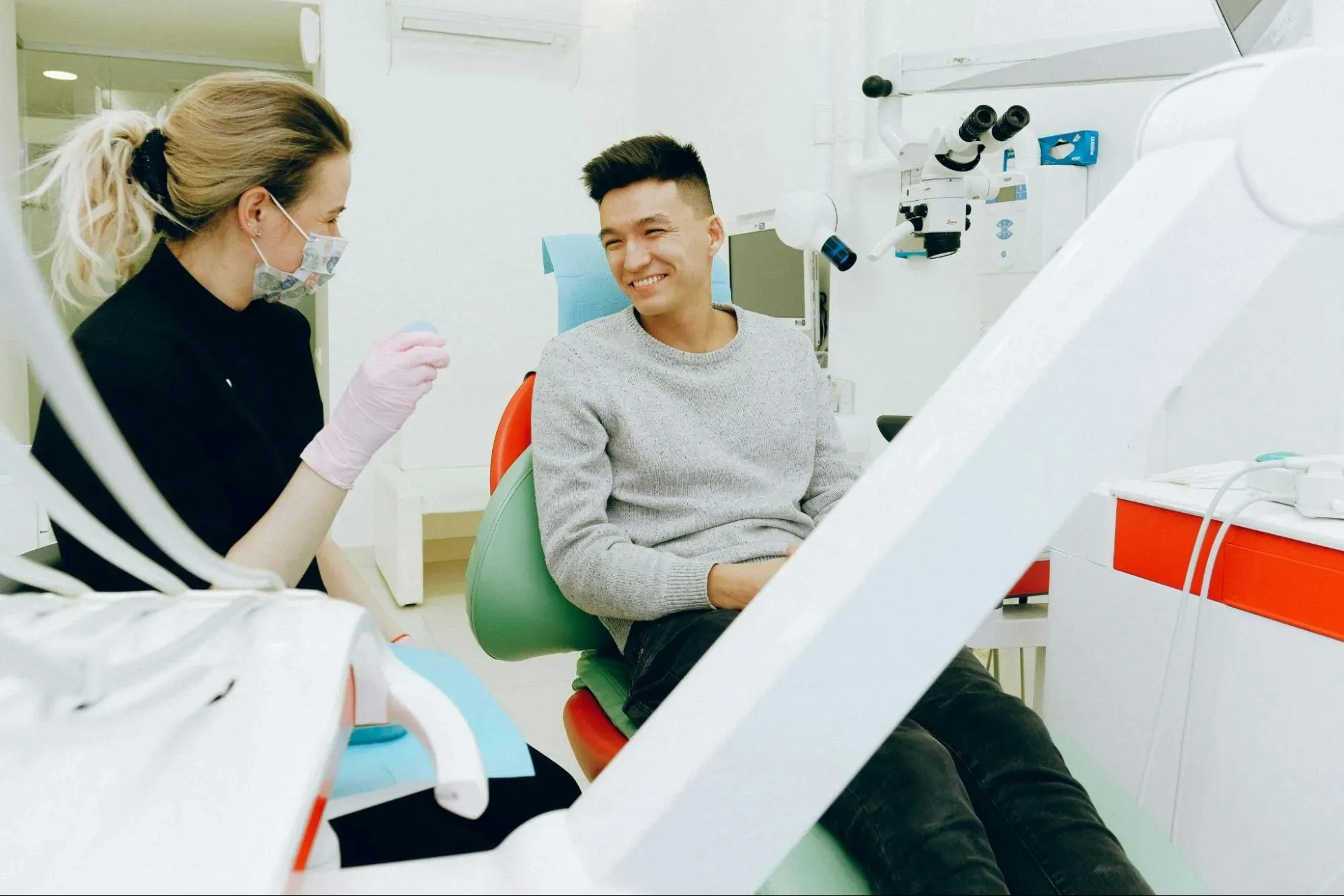What Methods Are Effective for Explaining Complex Dental Procedures?
Dentist Magazine

What Methods Are Effective for Explaining Complex Dental Procedures?
When it comes to demystifying complex dental procedures, a Cosmetic Dentist starts by employing visual aids to enhance patient understanding. Alongside expert opinions, we've gathered additional answers, including practical methods and innovative technologies used by dental professionals to ensure patients are well-informed. From the simplicity of written guides to fostering personalized dialogue through patient questions, explore the spectrum of strategies that make dental health less of an enigma.
- Use Visual Aids for Clarity
- Illustrate with Animations
- Employ Intraoral Scanning Technology
- Provide Simple Written Guides
- Demonstrate with Anatomical Models
- Augmented Reality for Patient Understanding
- 3D Video Demonstrations Aid Comprehension
- Encourage Questions for Personalized Dialogue
Use Visual Aids for Clarity
One effective method for simplifying complex dental procedures is using visual aids. Showing patients diagrams, X-rays, or even videos can help them grasp the procedure and better understand what to expect. This method allows patients to understand the treatment plan and builds trust and confidence in their dental care. Effective communication is essential to a successful dental practice and can make all the difference in a patient's experience.

Illustrate with Animations
Explaining complicated dental procedures to patients requires clear communication and understanding. It's tricky because we have to simplify technical terms without using confusing language, all while addressing any concerns they might have.
One really helpful method is to use pictures or computer animations to illustrate what will happen during the procedure. These visuals make it easier for patients to comprehend what we're discussing. I also ensure patients can ask questions and take time to talk about things. This way, they feel involved and not overwhelmed. This not only helps them understand the procedure better but also builds trust and comfort between the patient and me, the dentist.

Employ Intraoral Scanning Technology
Explaining complex dental procedures clearly is key at our dental clinic. We use the latest tools to ensure every patient grasps their treatment plan. One standout method is our intraoral scanner. This technology offers a detailed, three-dimensional view, making it simpler for patients to visualize and understand their specific dental needs. It's a game-changer in patient communication, turning complex ideas into clear, understandable images.

Provide Simple Written Guides
Explaining complex dental procedures can be achieved by providing patients with written descriptions that break down each step in simple terms. These written guides can help ease a patient's anxiety by giving them the time to digest the information at their own pace before the procedure. Clear language and avoidance of technical jargon are key to ensuring that patients understand the procedural steps, potential risks, and expected outcomes.
Diagrams included with these descriptions can also aid in visualizing what will happen during the procedure. Encourage patients to read the written material thoroughly and to bring any questions they might have to their next appointment.
Demonstrate with Anatomical Models
An effective method to help patients grasp the intricacies of dental procedures is the use of anatomical dental models. These physical representations allow for a tangible understanding of where and how a procedure will take place within the mouth. By pointing to specific parts of the model, a dental professional can demonstrate the location of the problem and the exact work that will be done.
This can greatly demystify the procedure for the patient and make the abstract more concrete. Ask your dentist to show you a model of your own dental procedure so that you can see exactly what will be done.
Augmented Reality for Patient Understanding
Implementing the latest in augmented reality (AR) technology can transform the way patients understand complex dental procedures. AR can overlay detailed visual information onto a patient's view of the real world, showing them a step-by-step simulation of the procedure overlaid on a digital model of their own mouth. This immersive experience can help to alleviate fears by allowing patients to visualize the outcome in a controlled and interactive environment.
Moreover, it provides a unique, personalized understanding of the procedure tailored to their own dental anatomy. If you're curious about how your dental procedure will look and feel, ask your dentist about the possibility of using augmented reality for your consultation.
3D Video Demonstrations Aid Comprehension
Another method to enhance patient comprehension of dental procedures is through the use of 3D video demonstrations. These video guides provide a dynamic view of the dental procedure, offering a detailed visual representation that can be paused and replayed for clarity. Watching a procedure in 3D helps to contextualize where in the mouth the work will be performed and what instruments will be used.
It can also show the step-by-step progression of a procedure, making it less intimidating. Inquire about the availability of 3D video demonstrations at your dental clinic to better understand your upcoming procedure.
Encourage Questions for Personalized Dialogue
Fostering an environment that invites questions with an open dialogue is vital to successfully explaining complex dental procedures. This approach ensures that patients feel comfortable asking for clarification on any aspect of the procedure they don't understand. During these dialogues, the dental practitioner can tailor the information to the specific concerns and understanding level of each patient.
This personalized communication encourages active patient participation and ensures that all doubts are addressed. Make a list of questions before your dental visit so you can have an open and informative discussion about your procedure.